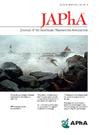Implementation of a multidose ophthalmic medication policy change at a large health system
IF 2.5
4区 医学
Q3 PHARMACOLOGY & PHARMACY
Journal of the American Pharmacists Association
Pub Date : 2025-05-01
DOI:10.1016/j.japh.2025.102356
引用次数: 0
Abstract
Background
In response to a multidose ophthalmic medication (topical eye drop) shortage, the health system had to evaluate the current policy for multidose medications and propose changes to the policy to provide patient care while managing the drug shortage. The use of multidose eye drops on multiple patients is accepted in ophthalmology care per the Centers for Medicare and Medicaid Services updated guidance for ambulatory surgical centers. Before this, the use of multidose eye drops on multiple patients had not been in practice at our health system owing to contamination risk from repeated use in the preoperative setting. Given the ambiguity of the current policy with regard to multidose ophthalmic drop usage and the available literature, an updated policy was developed.
Objectives
This report aimed to describe the evaluation, assessment, and implementation of a policy change supporting the use of multidose ophthalmic medications on multiple patients.
Methods
Key stakeholders met and assessed the impact of the shortage and potential policy needs. After the evaluation of available literature and regulatory guidance, the proposed change was brought through the necessary formulary, safety, and policy channels for review.
Results
After a review of the available literature, a determination was made that there is sufficient support for the practice of using multidose eye drops in multiple patients provided that there are appropriate infection control guidelines. The policy edits were approved by the appropriate committees and subsequently the organization’s policy oversight committee.
Conclusions
Our organization was able to make a substantial policy change through a collaborative, interdisciplinary review of literature and best practices to address a critical patient care need resulting from a medication shortage.
在大型卫生系统实施多剂量眼科用药政策变化。
背景:为了应对多剂量眼科用药(局部眼药水)短缺的问题,医疗系统必须对多剂量用药的现行政策进行评估,并对政策提出修改建议,以便在应对药物短缺的同时为患者提供护理服务。根据加利福尼亚州医疗服务管理局(CMS)更新的非住院手术中心指南,在眼科护理中接受对多名患者使用多剂量眼药水。在此之前,由于在术前环境中重复使用眼药水存在污染风险,我们的医疗系统并未对多名患者使用多剂量眼药水。鉴于现行政策在多剂量眼药水使用方面的模糊性以及现有文献,我们制定了一项最新政策:本报告旨在介绍支持对多名患者使用多剂量眼药水的政策变更的评估、评价和实施情况:方法:主要利益相关者召开会议,评估药物短缺的影响和潜在的政策需求。在对现有文献和监管指南进行评估后,通过必要的处方集、安全和政策渠道对拟议的变更进行审查:结果:在对现有文献进行审查后,确定只要有适当的感染控制指南,对多名患者使用多剂量眼药水的做法就有足够的支持。政策编辑获得了相关委员会的批准,随后又获得了组织政策监督委员会的批准:结论:通过对文献和最佳实践进行跨学科合作审查,我们的组织能够对政策进行重大调整,以满足因药物短缺而产生的关键患者护理需求。
本文章由计算机程序翻译,如有差异,请以英文原文为准。
求助全文
约1分钟内获得全文
求助全文
来源期刊
CiteScore
3.30
自引率
14.30%
发文量
336
审稿时长
46 days
期刊介绍:
The Journal of the American Pharmacists Association is the official peer-reviewed journal of the American Pharmacists Association (APhA), providing information on pharmaceutical care, drug therapy, diseases and other health issues, trends in pharmacy practice and therapeutics, informed opinion, and original research. JAPhA publishes original research, reviews, experiences, and opinion articles that link science to contemporary pharmacy practice to improve patient care.

 求助内容:
求助内容: 应助结果提醒方式:
应助结果提醒方式:


